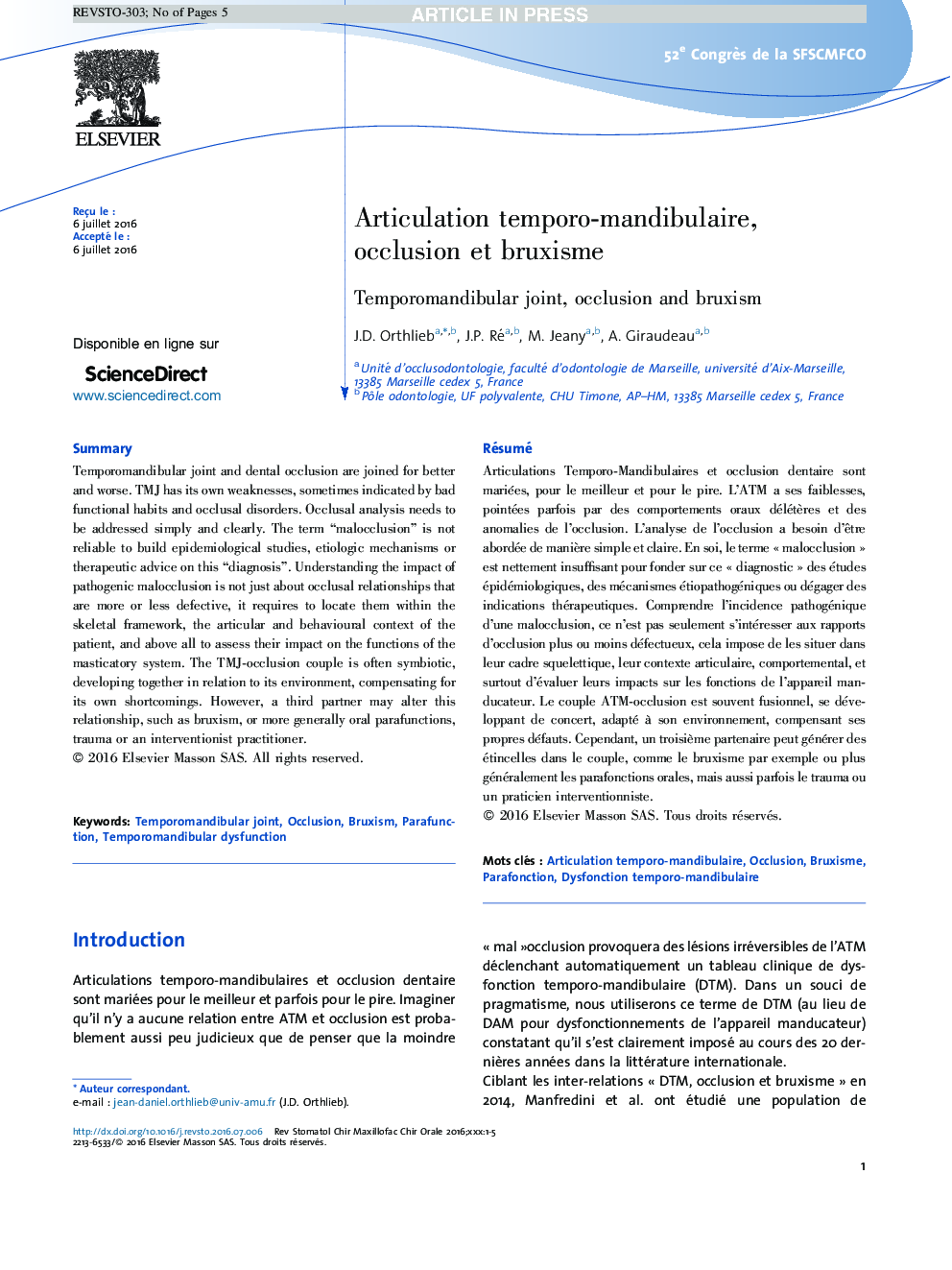| Article ID | Journal | Published Year | Pages | File Type |
|---|---|---|---|---|
| 3174860 | Revue de Stomatologie, de Chirurgie Maxillo-faciale et de Chirurgie Orale | 2016 | 5 Pages |
Abstract
Temporomandibular joint and dental occlusion are joined for better and worse. TMJ has its own weaknesses, sometimes indicated by bad functional habits and occlusal disorders. Occlusal analysis needs to be addressed simply and clearly. The term “malocclusion” is not reliable to build epidemiological studies, etiologic mechanisms or therapeutic advice on this “diagnosis”. Understanding the impact of pathogenic malocclusion is not just about occlusal relationships that are more or less defective, it requires to locate them within the skeletal framework, the articular and behavioural context of the patient, and above all to assess their impact on the functions of the masticatory system. The TMJ-occlusion couple is often symbiotic, developing together in relation to its environment, compensating for its own shortcomings. However, a third partner may alter this relationship, such as bruxism, or more generally oral parafunctions, trauma or an interventionist practitioner.
Keywords
Related Topics
Health Sciences
Medicine and Dentistry
Dentistry, Oral Surgery and Medicine
Authors
J.D. Orthlieb, J.P. Ré, M. Jeany, A. Giraudeau,
